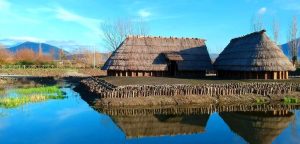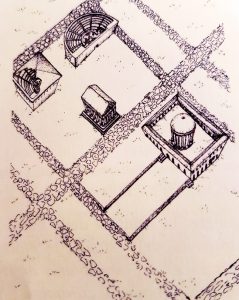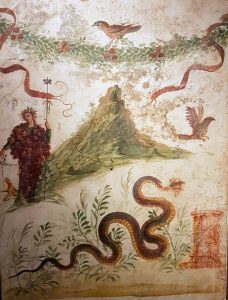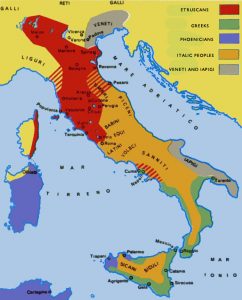
The first Greek colonies founded in Southern Italy and Sicily since the mid-8th century BC were organised according to the “polis model” that developed in the most advanced areas of Greece during the Geometric period (900-700 BC). The sites chosen by the Greek colonists for their settlements were the result of a careful knowledge of the territory derived from decades of frequentation of the Sicilian and peninsular coasts. The settlers analysed carefully the presence of hostile people, environmental conditions and the availability of resources (especially water), and normally they founded their “pòleis” (cities) on the coast. Their cities were founded on islands or islets near the coast (Ischia, Ortigia), on low promontories jutting out on the coast (Naxos, Elòro, Mylai, Taranto), on heights overlooking the sea or sloping (Cuma, Crotone, Caulona, Locri, Megara Iblea, Gela, Selinunte, Himera, Velia), near the mouth of important rivers (Sibari, Crotone, Metaponto, Naxos, Reggio, Selinunte, Gela) or near very well defined natural rivers (Taranto, Messina, Siracusa). Extremely rare were the internal foundations, only a few kilometres away from the sea (Leontini, Agrigento) or many more kilometres (for example Hipponion), and the coastal ones completely flat (Sibari, Metaponto, Poseidonia).
Once the most favorable area was identified and freed from any indigenous occupants, the first settlement could develop without any previous religious or traditional constraint. Therefore this condition allowed to implement a (REAL remove) rational planning of spaces, based on principles of substantial egalitarianism among the first settlers who received plots of land where they could build their dwellings (oikòpeda) and from which their sustenance derived . Thus the definition of the urban space appeared clear from the beginning. The “oikistes”, the guide of the colonists, highlighted the area destined to the city by tracing ritual furrows or by laying terminal stones, subsequently fortified through walls (earth walls and stones) and/or wooden palisades. Then they were replaced by massive walls made of squared and dry juxtaposed stone blocks (generally during the 6th century BC) such as to be immediately distinguishable with respect to the surrounding areas, reserved for the necropolis, all strictly external to the “pomoerium” . This word, borrowing the term from the best-known practices of the Etruscan-Italic and Roman world, came from the classical contraction of the Latin phrase “post moerium”, literally “beyond the wall”: in that religious boundary around the city, nobody could build, live and cultivate.
The settlers, when they founded a city, took into account the prospects for demographic growth and strengthening of the settlement from the outset. In fact, most cities have developed over the centuries within the limits defined at the time of the foundation. Only a few colonial “pòleis” (cities) have recorded over time such a great phenomenon of demographic growth to make necessary enlargements of the urban space: it usually started from the Classical period (480 B.C. – 323 B.C.). The cases of Taranto and Syracuse are emblematic, whose neighborhoods of more recent expansion superimposed on the necropolis of the Archaic period (600 B.C. – 480 B.C.).
Despite the very limited documentation for the first phases of life of the colonies, it is nevertheless evident that the need to immediately distinguish the spaces destined for community practices was primary:
1. Administration of the new “pòlis” (with buildings for the citizens’ assembly)
2. The “agora” (with the offices of the magistrates and where the commercial transactions took place)
3. Sacred areas (used for public cults, dedicated to the protective deities of the community, almost always the same venerated even in the motherland).
Often the “agora” – central public space – stood in the centre of the city, so to be easily accessible, and large enough to accommodate events that involved the entire community, not only of a political-administrative nature, but also religious, military, competitive and ludic.
Excerpt from: Giocacchino Francesco La Torre, Sicilia e Magna Grecia, Editori Laterza, 2011, pp. 157-160
For further info about our guided tours of Pompeii and Herculaneum













